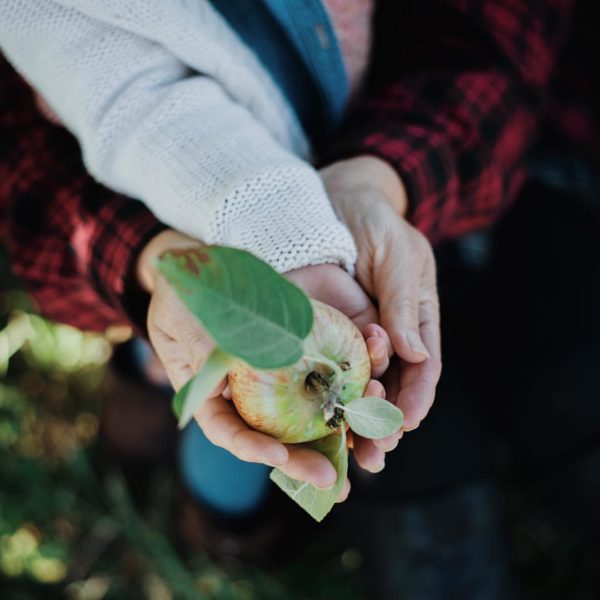Do you have gardens in your life that just aren’t “you”? Perhaps you’ve inherited someone else’s garden and landscape design through purchasing a home. Or maybe you’ve had your gardens for so long, you (or the plants) have outgrown the original garden plan and you’re ready to try something new. Though it can be tempting in either case to start ripping out plants and purchasing new ones, it would be wise to slow down, take a deep breath and consider the following suggestions when it’s time to make someone else’s gardens your own.

I have gone through this process with two separate properties and will be doing it again after we move this summer. Living in my previous home for over 10 years gave me many opportunities for trial and error and allowed me to come up with a long range plan that was just coming to fruition when I sold the home. My current home on 5 acres presented many more challenges with the 10+ perennial gardens, large vegetable garden, wild and cultivated berry patches, fruit trees and a combination of planned and natural landscapes. After living here for 8 years, I realize I bit off more than I could chew and at this point, am just trying to stay on top of the weeds!
So what are some considerations you need to take into account when re-doing your gardens or landscape design? In many ways, you will need to follow the same steps as you would take in establishing new gardens and landscapes.
Think Things Through
First, consider how much time and money you are willing to devote to the design, installation and maintenance of your gardens/landscape. Your decisions in this area will serve as the foundation for your landscape design. Hate mowing? Then you may want to consider turning a portion of your yard into a more natural landscape. Want to plant it and forget it? Do your research carefully. Though some think of perennial gardens as “maintenance free,” there can be a catch in that many perennials do their best with regular dividing and you can be in for a real job if that task gets put off. Case in point: I had what I am sure was once a beautiful hosta garden in front of my house. The garden had been so neglected that when I was finally able to get to it, it was a tangle of hostas, weeds, raspberry bushes and landscape fabric. It took hours of backbreaking labor to sort through the mess.
Divide Before Conquer
Second, take a complete inventory of your gardens and landscape. You most likely can’t tackle everything at once, so start prioritizing elements of your landscape that must be addressed immediately (invasive plants, for example) versus something that you can live with for awhile (that lily garden with many lovely plants as well as some not-so-lovely weeds). Are there some gardens you could let go for a few years while you sort things out? What plants do you absolutely love and want to preserve in your landscape?
Identify the Elements
Next, consider the environment (sun exposure, moisture, soil type) of each area you are thinking about updating. Maybe the reason the garden you loathe isn’t looking so hot is that it has the wrong plants in the wrong place. At my first home, I planted a vegetable garden in the only sunny, flat spot in the yard. I came to understand this spot was also where all the water from the alley flowed during rainstorms. No wonder I had so much trouble with powdery mildew! And I shudder to think what sort of chemicals the water was carrying from the alley into my garden.
Finally, keeping the above information in mind, develop a wish list of what you would like to have in your yard. Having gone through the process above, hopefully you will find that some of your dreams can be fulfilled using existing plants or elements of your landscape.
Slow It Down
From my experience, I encourage new homeowners to wait to make major changes to their gardens or landscape for at least one if not two complete cycles of seasons. I have learned that you really need to spend a lot of time wandering around the yard to become familiar with each plant’s habit during each season. It can be a very educational process and may lead you to some different conclusions than you had from your first impressions. Also, if you are not familiar with the plants in each bed, watching them emerge and develop over the course of the growing season will help you learn to distinguish valuable plants from noxious weeds.
Once you have decided which plants need to go, ask around to see if anyone could use the plants. You might even find a willing volunteer to help with your project! Major garden projects are often more satisfying when shared with another garden enthusiast.

One approach that has really worked for me is to find one bed you are comfortable with completely cleaning out and use that bed to temporarily house plants from other beds as you work through your wish list. A major motivator for me in tackling the overgrown hosta bed was that I needed the space to save plants from another bed that was being eliminated for a patio project the following spring. Each hosta I wrestled out of the ground got me one step closer to sitting with my feet up in front of the fire on my new patio!
Remember, be patient. It can be tempting to want to tackle everything at once but that approach can take a large toll on your time, bank account and sanity! By following the above suggestions, slowly but surely you will begin to enjoy a garden and landscape that truly represents your vision.











